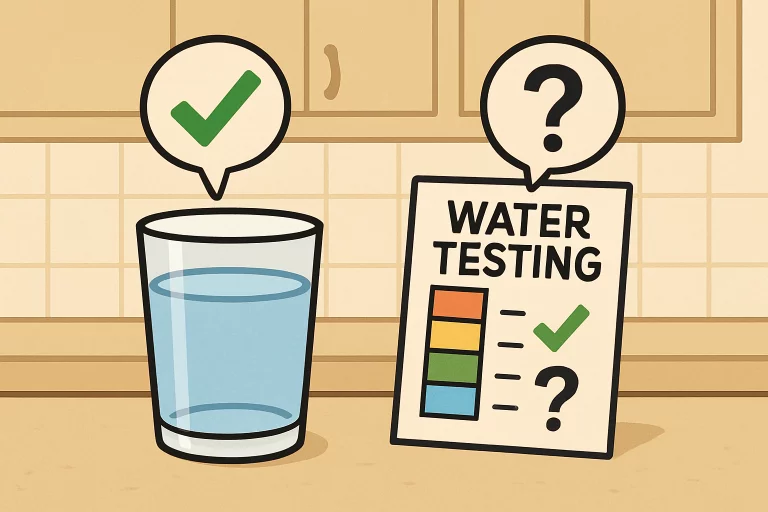Ensuring the safety of your home’s drinking water is vital for your family’s health, comfort, and peace of mind. While it’s common to trust municipal treatment plants or assume well water is clean, the reality is that harmful contaminants can infiltrate even the most reliable systems. These contaminants frequently have no obvious taste, odor, or color, making them especially menacing. Proactive and regular water testing offers a tangible solution, providing homeowners with a reliable assessment that uncovers hidden threats often missed by DIY approaches. Taking initiative with water testing is not just a precaution; it’s an ongoing responsibility that helps protect your family from both immediate and long-term health risks, including gastrointestinal illnesses, neurological issues, or exposure to carcinogens. In addition, regular testing is a critical component of maintaining compliance with local regulations and national health standards, offering reassurance in a world where water quality can be unpredictable.
Importance of Regular Water Testing
Regular water testing is much more than a recommended practice—it’s the frontline of defense against invisible threats lurking in your drinking water. Many contaminants, especially bacteria, viruses, and chemical pollutants, are imperceptible to the senses and remain undetected until you or a loved one falls ill. Drinking water testing helps identify these hidden dangers early, providing peace of mind and allowing corrective action before health risks escalate. According to the Environmental Working Group, while municipal water systems must meet baseline regulatory requirements for certain contaminants, these standards may not cover all harmful substances, and local incidents such as pipe corrosion or backflow events can still risk your safety. Regular testing becomes entirely the homeowner’s responsibility for private wells, which lack any routine government oversight.

Common Contaminants in Home Water Supplies
Understanding contaminants in water is crucial for selecting appropriate test methods and effective solutions. Common threats include bacteria and viruses, heavy metals like lead, copper, arsenic, mercury, nitrates from agricultural runoff, and PFAS (Forever Chemicals). These contaminants can cause waterborne illness, cognitive decline, delayed development, and organ toxicity. Understanding these threats helps prioritize testing, evaluate results, and choose the right water treatment strategies for your home and family. Familiarity with these potential threats helps prioritize testing and evaluate test results more effectively.
Professional Laboratory Testing
For those who need certainty—and particularly for households with young children, the elderly, or immunocompromised individuals—professional laboratory testing remains the most trustworthy option. State-certified laboratories offer the expertise, precision, and robust analysis needed to test for a comprehensive array of potential hazards, including bacteria, parasites, heavy metals, pesticides, solvents, and emerging contaminants like PFAS. Unlike basic home kits, laboratory analysis can detect trace contaminants and compare results against the latest health standards, so you know exactly where your water stands.
How Professional Testing Works
The process typically involves requesting a collection kit or instructions from the certified laboratory. You’ll collect water samples at recommended locations (commonly from the kitchen tap and, sometimes, directly from the well) following strict collection procedures to prevent pre-analysis contamination. These samples are then shipped to the lab and analyzed using calibrated scientific instruments. You’ll receive a detailed and legally recognized report within a few days to a few weeks, often with easy-to-understand benchmarks based on Environmental Protection Agency (EPA) or state guidelines.
Interpreting Test Results
Receiving your water test report can be overwhelming if you are unfamiliar with the scientific language or reference standards. Yet, interpreting these results is critical for making informed decisions. Every contaminant—whether biological, chemical, or mineral—has a specific safe threshold defined by regulators like the EPA or your local health authority. Exceeding these limits means your water is unsafe for drinking and food preparation until corrective action is taken. Examples include lead levels above 15 parts per billion, nitrate concentrations greater than 10 mg/L, or detectable counts of coliform bacteria.
- If bacteria are detected, Immediate disinfection of your home’s pipes or well system may be required, followed by retesting. If bacterial problems reoccur, install a certified UV light or reverse osmosis filter.
- High heavy metals: Consider replacing old or corroded plumbing, and use certified filtration systems—such as activated carbon or reverse osmosis units—on affected taps.
- Chemical or PFAS contamination: Consult with your state health department or a water treatment specialist for advanced filtration options or, if necessary, switch temporarily to bottled water until the issue resolves.
It’s important not to ignore reports of abnormal readings. Some health risks, such as neurological or developmental effects from chronic low-level exposure, can take years to become apparent. Always err on the side of caution and seek professional advice for guidance and remediation.
Maintaining Water Quality
Ensuring clean, safe water shouldn’t be a once-off task but an ongoing routine integrated into your home maintenance plan. Create a reliable schedule for water testing—at least yearly for private wells, or whenever major repairs, renovations, or contamination events occur. Test municipal systems after any boil-water notice, plumbing changes, or neighborhood construction projects. Keep all water treatment devices (filters, water softeners, UV systems) serviced regularly—replace cartridges, disinfect as needed, and address leaks or corrosion promptly.
